Untitled Document
By Judith I. Brennan
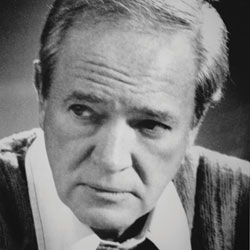
Static was the enemy of Franklin J. Schaffner. As an innovative director he changed network television by using a moving camera instead of a stationary one; as a DGA leader he pushed the negotiations team through logjams with the Alliance of Motion Picture and Television Producers over critical issues such as directorial authority and residual payments.
“He was fearless,” says Gilbert Cates, who served on the National Board when Schaffner was DGA president from 1987-1989. Cates, whose two-term presidency preceded Schaffner, would see him not only as a friend and respected colleague, but as a critical ally when the Guild went on its first and only strike in 1987.
“The strike occurred during my presidency and the negotiations over residuals were brutal,” says Cates. “The studios not only wanted to roll back industry residuals, they were trying to change the formulas for pay TV and video on demand. Franklin had a perspective of the Guild that was unique. Not only did he understand both the needs of directors in television and film, but he went on to become one of the greatest directors of both. And because of that history, the DGA really benefited by having someone like him as president.”
Schaffner, who died of lung cancer in 1989, months after completing his final film, Welcome Home, had previously served as president of the Radio & Television Directors Guild from 1953 to 1954. He began working in television for CBS after serving in the Navy’s amphibious forces in Europe during WWII, including the first wave of the Normandy invasion. He joined the struggling RTDG in 1948 when its members were focused on residuals and commercial broadcasts. When the RTDG merged with the Screen Directors Guild in 1960 to form the DGA, the young Schaffner had joined ranks with his idols—Frank Capra, King Vidor, Rouben Mamoulian, John Ford, and George Stevens.
Starting out in the golden age of TV, Schaffner won Emmys for directing the teleplays The Caine Mutiny Court-Martial and Twelve Angry Men, and helmed numerous episodes of The DuPont Show of the Week, Playhouse 90, and even the Edward R. Murrow series Person to Person. He won both the Oscar and DGA Award for his 1970 film Patton and directed the features Planet of the Apes and The Boys from Brazil, among others.
Schaffner began his nearly 30 years of DGA service in 1960 as a member of the National Board. In 1991, in recognition of his longevity of service, the Franklin J. Schaffner Lifetime Achievement Award for associate directors and stage managers was named in his honor.
He also served on the Western Directors Council, chaired the Negotiations Committee before his presidency, and fought to preserve directors’ creative freedoms. After striking against the studios in 1988, the WGA sought to have producers sign a new indie film and television pact that gave writers unprecedented new rights to participate in casting decisions for principal performers, locations and director selection. Schaffner issued a strong response to then WGA president, George Kirgo, via letter and trade ads noting that these new provisions would violate the DGA Basic Agreement and “undermine the role and authority of the director.”
“He would brook no efforts to minimize directors,” says Cates. “The writers were trying to get the studios to align with them against us, and there was never a question for him that we would fight. As a director and leader he had the respect of the entire Guild. Not only did he bring prestige to moviemaking, but he was a really, really great chairman of the negotiating committee. I’ve led that committee four times. And I know how good he was and what he put into it,” says Cates. “He was a force.”
For Schaffner, it was merely a matter of understanding the mission. “The staff position doesn’t exist, except in networks and local stations,” he once said. “Since we are freelance, we share a common concern: When you do a job and it’s finished, you’re out of a job. You’ve got to go out and hunt for another. That takes a certain kind of individual with a certain amount of imagination and a certain amount of energy—and more than a little devotion to what he or she does. The good ones are busy all the time, and because they are good they drive their prices up. But there is a danger there. The freelance people and staff look to the Guild for financial protection, standard working conditions, and creative protection.”
When asked why he would undertake the sometimes thankless job of chairing negotiations, Schaffner said: “Simple … somebody’s got to do it. If you’re a member of an organization, you have to exercise a degree of responsibility and recognize that service is its own reward.”
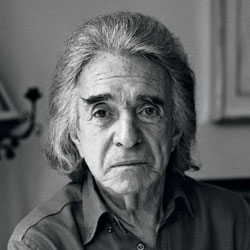
From the moment Arthur Hiller first sat in the president’s chair, the weight of his responsibility to members became clear.
“Being DGA president was a tremendous responsibility,” he recalled, reminiscing about his two terms in office from 1989-1993. “You’re talking about people’s livelihoods, about pension plans and health plans and residuals. And if you make a decision that’s good for 5,000 and it’s not good for five people, then I think, ‘What did I do for those five people?’”
Hiller’s passion for the creative rights of individual members was a keystone of his presidency. He served on the Creative Rights Committee for 20 years and was the founding chairman of the Artists Rights Foundation, which was formed in 1991 during his presidency with the mission “to educate the public about the importance of protecting and preserving art, particularly film art, to defend an artist’s work threatened with modification, distortion, or mutilation and to promote public debate about these issues to help safeguard our intellectual heritage.”
The Foundation was born out of the Guild’s advocacy for film preservation and the fight in the late ’80s against the colorization of black and white films. Hiller, who later served as the DGA’s representative on the National Film Preservation Board, considered that fight to be one of the toughest battles he faced.
Hiller testified before the House Judiciary Committee’s Subcommittee on Courts, Civil Liberties and the Administration of Justice on behalf of Congressman Richard Gephardt’s bill known as the Film Integrity Act of 1987—a “moral rights” bill responding to the creative community’s outcry against material alteration, particularly colorization of films, considered a technological assault on the country’s film heritage. Basically the bill provided that only the director, writer, or their heirs could agree to a film being altered.
“I probably did more one-on-one meeting with Congress members and senators than anyone else at that time,” reflects Hiller. “I remember we had a hard time in some of those committee meetings keeping them focused on what the artists meant when they created a film. Finally, I said: ‘Suppose you were interviewed on Nightline and you were terrific. It went so well that ABC decided to air your interview on Saturday except it is during the children’s viewing time slot, so ABC changes the soundtrack and you sound like Pee-wee Herman.’ That got their attention.”
Hiller also fought to secure the right of notification when films are changed for television broadcast. “It was painful to see when they showed a film on television—they had panned, scanned, edited, and compressed [running time] for commercials. We spent a lot of time lobbying against it,” Hiller recalls. “We used to say, ‘Just because you bought the Mona Lisa doesn’t mean you can paint a mustache on her.’ We finally got them to put a note at the end of the film saying it had been altered, shortened or changed for television.”
Before becoming president, Hiller joined the DGA National Board in 1971. He received the DGA Honorary Life Member Award in 1993, the year he stepped down from the DGA presidency and became president of the Academy of Motion Picture Arts and Sciences until 1997. Two years later he was given the Guild’s Robert B. Aldrich Achievement Award for service.
Hiller was just as active professionally as he was in the Guild. He worked on series such as The Third Man, Perry Mason, The Rifleman, Gunsmoke, and Alfred Hitchcock Presents. He moved almost exclusively into feature films in the mid-1960s, directing The Americanization of Emily, The Hospital, Silver Streak, The In-Laws, and Outrageous Fortune, among many others. His 1970 film Love Story was nominated for a DGA Award and a best director Oscar, and won a Golden Globe for best director.
And 20 years after his presidency ended, Hiller remains active with the Guild, attending Board and Western Directors Council meetings regularly. “I look back and hope I did something that made a difference,” he says. “Sometimes you’re making a decision that’s good for the Guild overall but it may not be good for three or four people, and that weighs on you. After investing four years, you are ready for your term to end because of that responsibility. But that doesn’t mean it wasn’t rewarding.”

Inclusiveness was the key to Gene Reynolds’ two terms as president from 1993-1997. Much of his energy was spent finding ways to engage a broader base of members and, at the same time, ensure the vibrancy of the Guild’s future by bringing in younger members and getting them involved in leadership roles.
“I was concerned that we were becoming one of those organizations—from the top down—of gray hair and bald heads,” says Reynolds. “We needed to bring in young talent and that meant helping them understand contracts, wages, injuries, everything. These were very bright people, but we had to educate them in certain aspects of the business. It takes a lot of experience and education. It was about building a future for the Guild. Growth was always on my mind, and it was important that they feel a part of this community.”
As a way to encourage younger members to get involved and prepare for leadership roles, Reynolds led the effort to increase the number of alternates on the National Board and councils from five to 10 members. “What it did was bring in more so that there would always be a quorum and not just the same faces,” he explains. “But it was also a way to educate more people and bring them onto different councils.”
Another way he hoped to instill a sense of community among members was with the popular Feature Directors Night where directors could meet other directors and talk about each other’s work. “That first night,” recalls Reynolds, “we had a bar in the back room and the energy that came off that was unbelievable. So it became an annual dinner.”
Reynolds was disturbed by the industry-wide lack of fairness in hiring opportunities for minority directors and was a strong supporter of the Guild’s diversity committees. “I think there were issues of racism and a contempt for women in the business … a self-defense mechanism for many who were [proponents] of the biases,” he says. “I think our own administration has to be pushed harder to fight this, especially when they get a push back from the studios about hiring minorities or women.”
He remembers attending a Women’s Steering Committee meeting one night and hearing their grave concerns over lack of opportunities. It was then that he conceived the idea of the DGA Student Film Awards, an annual competition for women and minority students at film schools across the nation. “The first competition was for women, then African-Americans, Latinos, and Asian-Americans were added. It has continued for 17 years and now there are 140 schools involved,” he says proudly.
Reynolds was also concerned about the lack of recognition for documentary filmmakers. “They are not usually in the union. They finance everything, and work by themselves without crews. They can’t afford to pay pension and they do some of the best work out there,” he says. “They weren’t being recognized by DGA Awards. And so I sought to extend the range of documentary awards to non-members.”
In addition, he backed the ongoing modifications and improvements to the low-budget agreements for independent directors. “It was important to accommodate people who are having to work with low budgets and are not financially able to follow all the requirements of our Guild,” Reynolds says. “Again, it’s about growth. We have to reach out to bring these people so their whole crew becomes part of the DGA.”
And speaking of growth, it was during Reynolds’ tenure that one of the most important additions to the organization was made—the hiring of Jay D. Roth as national executive director with the stated goal of revitalizing and modernizing the Guild. “Jay has done an outstanding job,” says Reynolds. “If I pride myself at all, hiring Jay has been the best thing I’ve done for the Guild.”
A veteran television director who helmed such hit series as Lou Grant, M*A*S*H, and My Three Sons, Reynolds was the 1993 recipient of the Robert B. Aldrich Award for service and continues to attend National Board and Western Directors Council meetings on a regular basis.
Regardless of what issue he was dealing with, Reynolds always tried to foster a sense of belonging among members and to look ahead. “It was as essential then as it is now that the DGA continues to grow so benefits such as minimums, pension plans, and protection of creative rights aren’t lost to future generations of filmmakers.”

For Jack Shea, a native New Yorker who moved to Los Angeles and became the West Coast president of the Radio & Television Directors Guild in 1954, and then in 1960 advocated the merger with the Screen Directors Guild to form the DGA, unity was the driving force behind his service to the Guild. Shea dedicated himself to getting everyone—women, minorities, and all members of the directorial team East and West—to serve on Guild councils and boards, fostering a greater sense of national unity and ensuring that the DGA remained firmly in members’ hands.
When he became president of the DGA in 1997, Shea was still keenly aware of the needs and concerns of East Coast members and continued to work as a unifying force between the two coasts. And since nothing symbolized the presence of the Guild in New York more than its headquarters, Shea, working closely with his secretary-treasurer Sheldon Leonard, oversaw the renovation of the DGA building and theater on 57th Street. He wanted to make sure it was a place of which East Coast members could be proud.
He also sought to raise the profile of the Guild in New York by supporting the establishment of DGA Honors to recognize individuals and institutions that have made distinguished contributions to the world of film and television.
One of Shea’s biggest priorities was ensuring that the Guild was in the hands of actively working members. He believed that while membership in the Guild granted members access to many beneficial services, the core purpose of the Guild was to represent people in their working lives. He felt that the key to protecting members’ creative and economic rights was to make sure that Guild leaders were also members who were currently working. Shea, together with then national vice president Ed Sherin and many other Guild leaders, led this discussion with the National Board and the membership. The result was the “Work in Trade” amendment to the DGA constitution, which required candidates for Guild-elected positions to have met certain work criteria in order to be eligible to hold office. Shea said the Board believed “it is very important that the people who are governing a guild be people who are functioning in the business. This is because some people like to be on councils long after they’ve stopped functioning in the business, and that is not fair to the working members.”
Shea also tackled the serious problem of runaway production, the exporting of film jobs to foreign countries, something he considered “a grave threat” to the industry. Addressing a rally on Hollywood Boulevard on a hot August afternoon in 1999, he demanded that Sacramento and Congress bring jobs that belonged to directors—and everyone else in the film and television industry—back to the U.S. “I’m here to tell you that the DGA will not stand idly by and allow American jobs to be exported by companies that have little loyalty and only care about profits. I pledge to you that the DGA is in this for the duration, in Sacramento; in Washington, D.C.; and wherever else we need to be,” he said.
When Shea began his presidency, work in television was covered by one of two different DGA agreements, depending on whether the work was shot on tape or on film. This essentially gave the studios the ability to pick which contract they wanted to work under by simply choosing the method of recording television programming most advantageous to them.
As a director who had come from tape and was working in film, Shea understood that there was little rationale for using two different contracts to cover what was essentially the same work in television, regardless of the format it used. The “blended contract” agreement negotiated during his presidency ended the artificial divide by covering all primetime dramatic programming under the same terms, regardless of whether it was shot on film, videotape, or digital video.
During his presidency, Shea tirelessly pressed for diversity in hiring, encouraged a preferred practices code for writers and directors over certain creative rights issues, guided the founding of the Independent Directors Committee and Political Action Committee, and focused on international and network organizing.
Shea, whose directing credits include such TV series as Growing Pains, The Waltons, and Sanford and Son, served for 35 years on the Western Directors Council and National Board, as chair of the Negotiations Committee, as vice president, secretary-treasurer, and was a member of numerous other committees. For his commitment to the Guild and its membership, Shea received the Robert B. Aldrich Award in 1992.
Reflecting on his service as DGA president, Shea told the Archive of American Television, “I was brought up to believe in unions. Unions are important to working people and directors are working people. The most important thing the Guild does is support and protect directors. People look to directors to be leaders. We set the pattern when we go into negotiations, and when we go in we are able to come up with a fair contract for our members. I think we are a stabilizing influence, and if the DGA disappeared I think we would come unglued.”
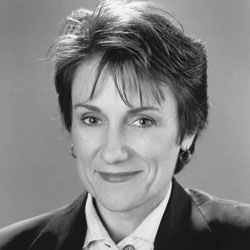
A champion of diversity, Martha Coolidge finds herself in the position of being a member of a somewhat exclusive club. The first woman president of the DGA (2002-2003) and one of the industry’s first mainstream female directors, she has served the Guild for two decades on numerous committees, including a stint as chair of the Creative Rights Committee. For her, those years of service were “the best education any director could ever get.”
A distant cousin of president Calvin Coolidge, she joined the DGA in 1983 and began serving on the Guild’s Western Directors Council the following year. Five years later, she became an alternate on the National Board. In 1991 she became a Board member and rose rapidly through the leadership ranks, becoming third vice president in 1993 and then first vice president in 1995, a position she held for the next seven years. In 1992, Coolidge also became chair of the Creative Rights Committee and went on to co-chair the committee with John Frankenheimer for six years.
In 2002, then-president Jack Shea stepped down after serving 2 1/2 terms as Guild president. Shea had stayed on as president for part of a third term to see the Guild through the 2002 negotiations cycle. Once the negotiations were successfully concluded, Shea stepped down and the Board elected Coolidge to serve out the remainder of his term.
Throughout her years of service to the Guild, Coolidge has remained committed to promoting diversity and encouraging studios and networks to hire minority and female directors. In 2002 Coolidge shepherded a DGA diversity report on the hiring of directors by the networks on the top 40 primetime dramas and comedy series over three seasons.
“We did it after we learned how unhappy our women members were and realized they [the producers and networks] hadn’t told us the whole story—the statistics were much worse than we realized. For many years the Guild challenged the industry on this, but it wasn’t until the hiring practices on those shows were revealed through this report that we realized how uncommitted they were.”
The damning exposure had an impact for a time, “but what you see now is when minorities are hired more, women are hired less and vice-a-versa, as if it’s a trade-off.” As Coolidge says, gender and race have nothing to do with talent. She believes good directors have the strengths of both genders.
Fighting for members’ rights is what attracted Coolidge to DGA service in the first place, a cause she relishes. In addition to diversity issues, during her presidency Coolidge focused on runaway production and issues relating to directors authorship. Vocal on every count, Coolidge was also deeply concerned about enforcing directors’ creative rights when it came to changes in technology.
“There is this micromanaging aspect from studios and [network] executives that came along with the onslaught of the digital age,” she says. “Thanks to digital monitors, executives were watching setups on shots even before the director had a chance to finalize anything. They were seeing dailies before the directors, giving opinions on color filters used, and in some cases file sharing with their relatives before the director even had a chance to see the footage. There was so much input that it was actually defining what the director was doing,” she says. The DGA pressed hard against this “and finally, today, only the director dictates who sees dailies.”
Coolidge’s broad range of credits in film and television include Valley Girl, Real Genius, and Introducing Dorothy Dandridge, an HBO made-for-television movie that earned her DGA Award and Emmy nominations for best director. She also received a DGA Award nomination for An American Girl: Chrissa Stands Strong.
When the Guild honored Coolidge with the prestigious Robert B. Aldrich Award in 1998 in recognition of her extraordinary service to the Guild and its membership, her predecessor Shea lauded her for exemplifying the selfless dedication of those in the DGA who have “demonstrated that special brand of service” to the Guild and its members, calling her “a most deserving recipient of its highest service honor.”
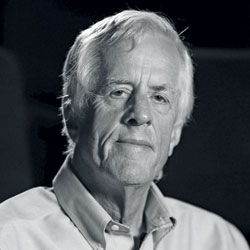
Michael Apted’s time as Guild president from 2003-2009—the longest consecutive service since George Sidney—was nothing if not eventful. But
Apted’s steady demeanor, diplomacy, and British sense of humor helped steer the Guild calmly through some very turbulent waters while achieving significant gains for its members.
During his presidency, Apted oversaw two successful but very different rounds of Basic Agreement negotiations.
In 2004, the DGA Health Plan, like most health plans across the country, was facing severe financial stress due to several years of historic health care inflation. The Guild needed to negotiate a new contract that would stabilize the plan and secure its ability to provide benefits for members, retirees, and their families. In September of that year, the DGA announced a new contract that was the largest total economic package in Guild history—successfully protecting health benefits while providing wage increases and significant gains in creative rights for directors and their teams.
After the 2004 negotiations, the DGA began qualitatively increasing its research capacity—through internal research, the purchase of data, and the hiring of outside consultants at significant cost to the Guild—to address issues raised by the advent of new media. Apted supported this effort so the DGA could understand how new technologies would affect the business. In 2006, he proposed a retreat of DGA leaders, executives, and top consultants to examine these issues and create a plan to put together projections on the future of new media. By early 2007, the Guild was well prepared and had a well-developed point of view about how new media should be approached in the next round of negotiations.
“We came to the belief that the business models for new media were in their infancy and that much change would occur before they were settled or truly monetized,” said Apted. “Our decision was to focus on jurisdiction and to lay the foundation for the future by extending certain key and new residuals formulas into new media. We knew we needed to both protect our members and let the market further develop. The WGA did not share this view and saw 2007 as a ‘watershed moment’ that led them to striking over a host of issues, including new media.”
The strike had a devastating economic impact on the industry and on DGA members, and the WGA appeared unable to end the stand-off. Finally, after 68 days of the writers’ strike, the DGA began negotiations on behalf of its then 13,500 members.
The decision to proceed took place after the full Negotiations Committee, the National Board officers and the Directors Council had fully discussed and debated the issue. “This was the toughest decision,” recalls Apted. “We had a responsibility to negotiate for our own members and planned to start in the fall of 2007. We waited and waited, but [the writers] were stalled. We were prepared and had done the research.”
Apted appointed former Guild president Gil Cates to serve as negotiations committee chair, and under Cates’ guidance, the DGA emerged from the negotiations with a contract that established jurisdiction in new media, for the first time setting a template that was adopted by the other guilds and allowing the WGA strike to be resolved.
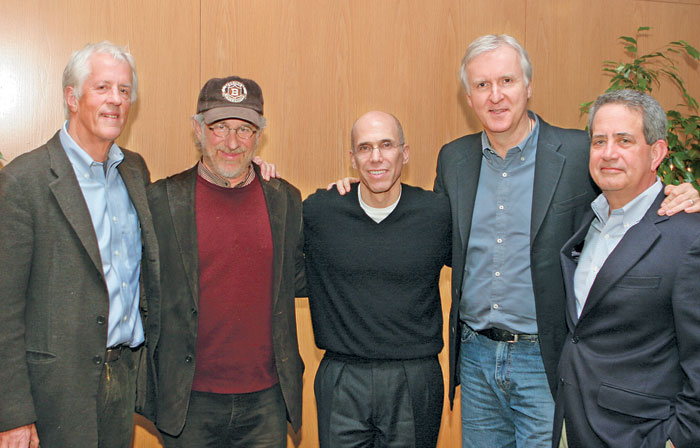
A veteran feature, documentary, and television director, Apted joined the DGA in 1978. He began serving on the Western Directors Council in 1997 and the National Board in 2001, was elected fifth vice president in 2002 and president in 2003. But his advocacy for independent and documentary filmmakers was evident even before he became president. In 1998, he was a founding member of the Guild’s Independent Directors Committee under then president Jack Shea and served as chair until he was elected president. He instinctively understood that independent filmmakers were in some ways more vulnerable to the whims of the industry and needed the protection of the Guild. It was his personal commitment to make the Guild as indie-friendly as possible. “There were a bunch of independent filmmakers that needed our support, and the Guild needed to represent all areas of filmmaking, including documentaries.”
This held true for reality television as well. At the beginning of Apted’s presidency, the DGA Reality Television Committee was formed to address the concerns of directors and their teams working in this area. Very few reality shows were produced under DGA agreements at the time; by the end of his presidency, the Guild had organized nearly 350 shows.
During his tenure, Apted also acted to protect the integrity of the possessory credit in 2004 with a side letter barring first-time directors from receiving the credit unless he or she brought the property to the studio that was the basis for the film and provided substantial services to its development. “We felt it should not be given until one had begun to establish a career and a voice,” says Apted.
The following year, Apted initiated one of the most important battles of his presidency, the fight against Internet theft, which included, in 2009, a National Board resolution in support of French legislation to combat digital content theft through an education and warning system.
As he reached the end of his third term, despite having met the challenges of his time, Apted says he knew “enough was enough. It was time for a fresh governance, for another to step up.” But stepping down didn’t mean stepping away. As dedicated as ever, Apted continues to serve on the National Board and is co-chair of the Political Action Committee’s Leadership Council and chair of the DGA’s 75th Anniversary Advisory Committee.